Music
Trailers
DailyVideos
India
Pakistan
Afghanistan
Bangladesh
Srilanka
Nepal
Thailand
StockMarket
Business
Technology
Startup
Trending Videos
Coupons
Football
Search
Download App in Playstore
Download App
Best Collections
Technology
Several months after discreetly acquiring the online prescription service HeyDoctor, GoodRx is launching a new service based on the acquisition, GoodRx Care and offering a direct challenge to online prescription services like Hims, Hers, Nurx, Ro and others.
Already a billion-dollar giant in the world of prescription fulfillment through its cost-comparison and discount medication fulfillment business, more than 10 million consumers use the companyservices already.
With GoodRx Care, customers can use the online medical service to get a consultation, treatment, prescriptions and lab tests from doctors. The array of services on offer, which covers conditions and ailments from urinary tract infection treatments and birth control pills to erectile dysfunction medication and hair replacement supplements, mirror those pitched by white-glove online prescription services like Ro, Hims, Hers, and Nurx .
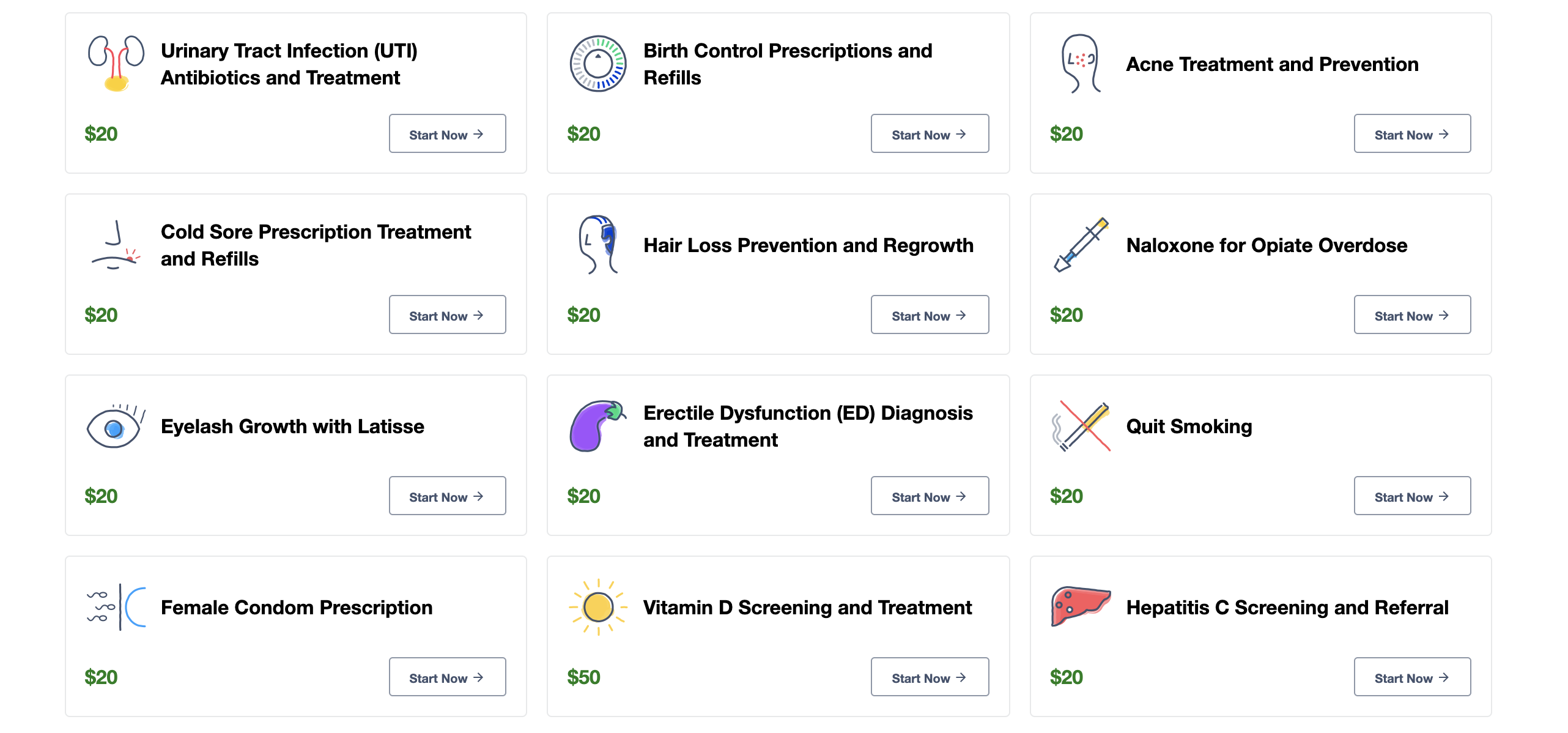
GoodRx Care services
&Over the years, we&ve helped millions of Americans find affordable solutions for their prescription medications, but have also learned that many people struggle to get to the doctor,& said Doug Hirsch, co-CEO and co-founder of GoodRx. &By introducing GoodRx Care, we aim to help fill in the gaps in care to improve access, adherence, and affordability of medical care for all Americans.&
For Hirsch and GoodRx, the expansion into these kinds of online consultations was a natural extension of the companyservices. &One third of people who come to GoodRx . are coming to GoodRx and they may not have the prescription that they don&t think they need,& he says. &For a long time now we&ve been telling people you may need a prescription for the service and telemedicine options are available.&
Now the company can keep those customers in-house by offering their own telemedicine consults.
Other technology companies are also pushing deeper into the healthcare industry with Amazon making a big splash with the launch of its employee-only healthcare service offering telemedicine and on-site consultations with staff doctors. Apple, too, has its own healthcare service for employees.
Even BestBuy is seeing big dollars in the healthcare industry. It expects healthcare services to become an increasingly important component to its bottom line as more technology hardware and software is developed to cater to both the aging population, remote health solutions, and infant and childcare.
Demand for more healthcare alternatives is only increasing even as the cost of care rises and the value of healthcare services declines.
As GoodRx notes, access to primary care physicians is hard for most Americans. Some patients can wait up to three weeks to see a doctor and therethe potential that the country could see a shortfall of up to 120,000 doctors coming within the next 15 years. Add that to the fact that over 27.5 million Americans don&t even have health insurance and the demand for low cost access to care seems obvious.
Whatless obvious is that the care Americans need is access to physicians which will prescribe hair-loss or erectile dysfunction treatments, acne treatments, eyelash growth, or metabolic assessments.
Hirsch says more services will be coming in later months. &We&re at the very early stages of telemedicine,& he says. &We want to continue to expand into more primary services as is safe and affordable and as we can.&
For now, the focus was on bringing the price point down and having more control over where to refer customers. &A lot of these services are tied to mail-order clinics and that could be hundreds of dollars [for a consultation or prescription],& Hirsch says. &We&re going to say it$20 for a visit. You can do it today… and you can have a pricing options… we&re saying you&ve had your doctor visit… herea list of prices and coupons if you want them.&
Since its launch in 2017, HeyDoctor has had over 100,000 consultations and had already been working with GoodRx, according to Hirsch. The terms of the acquisition were not disclosed.
The acquisition of HeyDoctor is the first big strategic gambit from the company in the year since it raised money from the private equity firm, Silverlake, in a transaction which valued the discount pharmaceutical provider at roughly $2.8 billion, according to a CNBC report.
&In an increasingly fragmented and confusing healthcare system, our goal is to provide a one-stop shop for services that address most basic healthcare needs,& said Hirsch.
- Details
- Category: Technology
Read more: GoodRx is coming for subscription prescription services with the launch of GoodRx Care
Write comment (98 Comments)
The U.S. Department of Justice has issued a preliminary set of guidelines for how law enforcement agencies can use in their investigations genetic information from consumer DNA analysis services.
&Prosecuting violent crimes is a Department priority for many reasons, including to ensure public safety and to bring justice and closure to victims and victims& families,& said Deputy Attorney General Jeffrey A. Rosen, in a statement. &We cannot fulfill our mission if we cannot identify the perpetrators. Forensic genetic genealogy gets us that much closer to being able to solve the formerly unsolvable. But we must not prioritize this investigative advancement above our commitments to privacy and civil liberties; and that is why we have released our Interim Policy& to provide guidance on maintaining that crucial balance.&
Most critically the Department guidelines clearly state that a suspect &shall not be arrested based solely on a genetic association& generated by a genetic genealogical service.
If a suspect is identified using genetic information, the sample must be directly compared to the forensic profile that had already been uploaded to the FBICombined DNA Index System (called CODIS).
Genetic information from a consumer service can only be used when a case involves an unsolved violent crime or sexual offenses and the forensic sample belongs to the person investigators believe to be the perpetrator or when a case involves the remains of a suspected homicide victim, according to the Justice Department.
Prosecutors have the ability to expand or authorize the use of genetic genealogical data beyond violent crimes when law enforcement is investigating crimes that present &a substantial and ongoing threat to public safety or national security.&
Genetic data from a consumer service can only be used after investigators have searched the FBIinternal system and the collected samples that would be correlated with public information must be reviewed by a designated laboratory official, the Department of Justice said.
&The DLO must determine if the candidate forensic sample is from a single source contributor or is a deduced mixture. The DLO will also assess the candidate forensic samplesuitability (e.g., quantity, quality, degradation, mixture status, etc.),& for comparison with publicly available genetic records.
Under the new guidelines, law enforcement agencies can only search consumer genetic databases that provide explicit notifications to their users that law enforcement may use the services to investigate crimes or identify human remains. Investigators also have to receive consent from users of the genealogical service if their genetic information is going to be collected as part of an investigation (unless the consent would compromise the investigation).
These new guidelines follow a series of revelations from earlier in the year centering on the fact that DNA testing services had opened up their services to law enforcement agencies to aid in criminal investigations without their customers& knowledge or consent.
At the heart of the story was the decision by the genealogy service FamilyTreeDNA to open to law enforcement agencies the genetic records of several million customers without informing their customers. The story was first reported in January by BuzzFeed.
It wasn&t the first time that law enforcement had turned to genetic evidence to solve a crime. In April 2018, the police arrested a man believed to be the &Golden State Strangler& in part thanks to DNA evidence collected from online DNA and genealogical databases. It was the first instance of public genetic information being used to solve a crime.
The ensuing outcry over FamilyTreeDNAdecision brought new attention to the fact that the consumer genetic testing companies are largely unregulated and very few regulations exist governing how these companies can use information once a consumer has given their consent.
&We are nearing a de-facto national DNA database,& Natalie Ram, an assistant law professor at the University of Baltimore who specializes in bioethics and criminal justice, told BuzzFeed News at the time. &We don&t choose our genetic relatives, and I cannot sever my genetic relation to them. Therenothing voluntary about that.&
- Details
- Category: Technology
Technological progress has created a situation of severe tension and incompatibility between the right to privacy and the extensive data pooling on which the digital economy is based. This development requires new thinking about the substance of that right.
In the last decade, both governments and giant corporations have become data miners, collecting information about every aspect of our activities, behavior and lifestyle. New and inexpensive forms of data storage and the internet connectivity revolution — not only in content, but in fact — in just about everything (from smart appliances to nanobots inside peoplebodies) — enable the constant transmission of big data from sensors and data-collection devices to central &brains&; the artificial intelligence revolution has made it possible to analyze the masses of data gathered in this way.
The intensive collection of data and the inherent advantages of the new technology have spawned the cynical idea that privacy is dead, and we might as well just get used to that fact. In what follows, I will describe three aspects of the right to privacy that have become especially relevant in the digital world. I will then demonstrate that not only is privacy still alive and kicking, but also that we should treat it with the respect it deserves as the most important of all human rights in the digital world.
The first perspective on privacy in the digital world is the idea that the appropriate reaction to the massive pooling of data is to enhance this right, so that we all have better control over our personal information. Individuals should be able to choose what space within their personal domain can be accessed by others and to control the manner, scope and timing of its exposure.
From this perspective, and in a different and more extreme fashion than with regard to other human rights, the borders of the right to privacy allow for compromise and flexibility. Thanks to this control, I — as an individual — have the right to view the content of databases containing information about me. Furthermore, no one is allowed to make any use of this information without my consent, except in extraordinary circumstances. I retain the privilege to agree to the terms of use before I download an app onto my cell phone or began to use freeware — product categories whose economic model rests on commercializing my personal data.
Above all, we need to understand the limits of privacy as control.
This approach is reflected in the regulations requiring my consent for others to make use of and process personal data, ensure my access to data about myself and stipulate that I can have it deleted, corrected or transferred to a different company.
But there is one serious problem with this approach: It is utter fiction. It simply isn&t possible to speak about consent to violations of privacy in a world in which data is processed in many ways and for many purposes, some of which cannot be foreseen at the time when consent is granted. Furthermore, every beginning scholar of behavioral psychology will tell you that no one reads the terms of use, even when they are phrased concisely or displayed in large print — neither of which is the case, of course.
Were this not enough, there is also the psychological phenomenon of the &privacy paradox,& which refers to thediscrepancy betweenthe concept of privacy reflected in what users say (&I care deeply about my privacy&) and their actual behavior (&A free pizza? Fantastic! What information do you need?&)
The downside of the notion of privacy as control is that our control of our personal data is quite fictional. There is an overall problem — whereby commercial entities avail themselves of huge tranches of private information without having obtained real consent for doing so. This information, in turn, can be put to various uses, some of which are of value, while others pose serious threats to society.
Above all, we need to understand the limits of privacy as control. It is clear that the best approach would be to upgrade our digital literacy and learn how to deal with the situation; but the problems noted here make this idea only minimally relevant. Perhaps the solution is to start with clearer legislation — national or international — that defines reasonable and legitimate uses of personal information and mandates companies to obtain the consent of the individual involved, only when the proposed use does not fall into that category.
Somewhat paradoxically, the second approach to the right to privacy in a digital world relates to the most basic and classic connotation of the right to privacy — the &right to be left alone.& This refers to our right to preserve and protect our identity and maintain a safe and protected space around our body, thoughts, feelings, darkest secrets, lifestyle and intimate activities. A world with sensors and surveillance cameras all around us, along with recording devices and gadgets that are constantly monitoring what we do, has far-reaching psychological ramifications.
In the discourse on privacy, we tend to deal chiefly with questions of controlling the transmission or management of information after it has been collected, with regards to issues of data anonymization, security and encryption. But what we need at the present time is to ask whether there really is a commercial, business or public need to collect our private data so obsessively.
Against the clear advantages of technological progress, commercial convenience and even law enforcement, we must weigh the chilling effect on curiosity, on trust, on creativity, on intimate activity, on the ability to think outside the box — which is the critical spark to innovation.
Whatmore, the essential feature of all digital personal assistants is the human traits (voice, face, language) with which their developers have endowed them. These devices are supposed to give us the feeling that there is another human being in the room. Researchers have shown that in contrast to our behavior with what we perceive as a machine (such as a computer or telephone), we react to humanized technology as if a real person were standing there. The right to be left alone will get a whole new meaning, then, different than in the internet age.
The third approach to the right to privacy is the idea that privacy should make it impossible for commercial or government entities to combine our personal data with big data amassed from other people in order to construct precise personality, psychological and behavioral profiles through machine learning. This phenomenon, known as the &autonomy trap,& applies to information about emotional tendencies, insecurity, sexual orientation (even of persons still in the closet), fears and anxieties and more.
The problem is that the personality profile is used for retargeting advertisements of products or services or for other facets of influencing behavior — all of it in a way that is precisely tailored to the needs associated with the profile.
In a world in which it is possible to pool and analyze information about us in order to generate buying and behavior recommendations &just for you& (purchases on Amazon, shows on Netflix, navigation guides such as Waze), we in effect are unwittingly surrendering some of our decision-making autonomy to systems that know what is the best route to our destination and what we should eat.
Without individual privacy there is no meaning to an individuallife.
We also are exposed to attempts at individual persuasion tailored just for us, with a power, invasiveness and capacity that did not exist in the past. Think &self-restraint preference algorithms& power devices, such as personal assistants, whose purpose is to learn as much about us as possible — what we are interested in, who our friends are, our habits, our mood — and then to help us by sending messages, making phone calls, setting appointments, ordering products or making travel reservations.
We must remember the slippery slope from the use of techniques for collecting personal information in order to offer products and services, and the use of the very same techniques to influence our thoughts, creates an autonomy trap about beliefs, and undermines our trust in democratic institutions — in brief, manipulates elections.
The Cambridge Analytica scandal in the spring of 2018 — which took the lid off the exploitation of personal data in order to sway the elections in many countries — shows that the right to privacy goes far beyond individual control of information and extends to a threat to the very possibility of conducting a sound democratic process, and thus — of protecting all human rights.
And so, in the digital world, privacy must be seen as a crucially important right for us as a society, as a collective. At the conceptual level it needs to go through the same process of evolution as its older sibling, the right to freedom of expression. Just as freedom of expression started out as the right of individuals to scream to their heartcontent, and developed into a collective right that sustains a rich and functional public discourse so that we can engage in a healthy democratic process, so too privacy must grow and develop — from the right of individuals to trade in their own data, into a collective right of defense against autonomy traps, in the context of elections and mind control.
The laws governing commercial competition will have to develop ideas that see personal data as an independent market. Antitrust agencies will have to look at the concentration of the personal data held by a single entity.
By the same token, the laws on election propaganda will have to regulate what types of personal information may not be exploited in campaigns, and determine whether there are techniques whose persuasive and manipulative powers are so great that they should be banned.
Privacy is not dead. In fact, it has become our most basic right and must be protected. Without individual privacy there is no meaning to an individuallife, and without privacy, democracy loses all meaning.
- Details
- Category: Technology
Read more: Privacy in a digital world
Write comment (97 Comments)Pear, a Palo Alto-based seed-stage fund that has made its name through early bets on Guardant Health, DoorDash, Memebox and Gusto, hosted its sixth annual demo day this week in what proved to be a scorchingly hot afternoon in Woodside, Calif. — not that invitees were put off by the heat.
Hundreds of investors showed up at a sprawling public estate and surrounding gardens to see the dozen teams that Pear spent the summer working with, each of them less than nine months old, according to Pear, and many incorporated only in recent months. (Each has also only received less than $200,000 so far from Pear, and no other institutional investment.)
While some are sure to evolve into other ideas or dissolve into other endeavors, the whole of the group gave those gathered food for thought and a first look at some very solid talent.
Following are the companies that presented:
1) Windborne: Founded by three Stanford grads and another from Harvard, this startup aims to improve the accuracy of weather data where itcurrently limited, like over oceans, by using weather balloons that could allow the team to do things like tell shipping companies which route to take to minimize fuel burn. CEO Paige Brown also says their system can fly 60 times longer than existing solutions and for the same price. The more specific claim: that in a single $350 flight, a Windborne balloon can fly for more than five days and travel a quarter of the way around the world, collecting direct measurements in places no one else can.
The team apparently bonded as engineers in the Stanford Student Space Initiative and they&ve all worked at SpaceX.

2) Guild: This one was started by two Stanford grads and helps companies make branded credit cards. Why would they bother? Because, the startup claims, branded credit cards are a lot more lucrative — increasing spending by 20%, cutting churn by roughly half and generating $50 per year of profit per customer. Co-founder Michael Spelfogel says he knows of which he speaks, having tried, unsuccessfully, to launch a branded credit card while at Lyft.
He also says the idea is to partner with sports teams first.

3) Polimorphic: Started by two computer scientists out of MIT, this startup is building a &civic media platform& meant to help politicians communicate with constituents. The platform basically invites visitors to express their views directly to their political and government leaders, while it also gives campaigns, civic groups and governments a way to engage with those individuals (though the latter has to pay to do this). Ita meaningful market, they argue, saying that campaign spending has been growing by 50% in between major election cycles, with $9 billion spent in 2016 alone.
Of course, because this was a demo day, the founders also talked about their traction, saying they already have three letters of intent, and volunteering that they&re in early talks with three presidential campaigns.
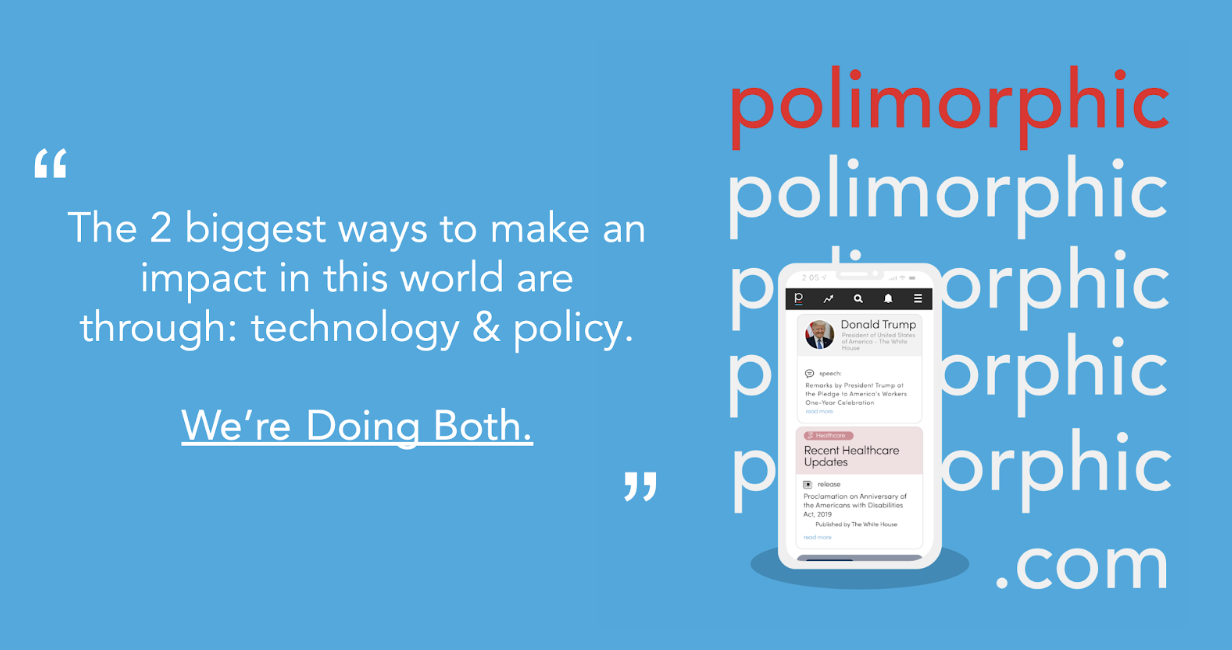
4) Gradio: Launched by graduates of Stanford, Georgia Institute of Technology, NYU and MIT, Gradio says it speeds up the process of collecting and labeling data for use with AI and machine learning. The &Gradio data engine& corrects mislabeled data, identifies and removes &low value& data and highlights the highest-value data. Ita smart pitch, considering that acquiring and labeling data right now requires tons of human labor and often requires pricey domain expertise and that, even so, something like one if five data points is mislabeled at a typical AI company.
As for who will use the technology, the founders say they&re targeting companies in the natural language processing space first.

5) Sympto Health: Launched by two founders from UC San Diego (one who graduated, one who dropped out to build Sympto), this startup is trying to tackle a universal problem, which is that patients very often forget clinical instructions, and when that happens, they sometimes wind up being readmitted to the hospital.
Sympto ties into a care facilityexisting systems/workflows and sends &patient engagement& messages — things like surgery checklists, pre-appointment questionnaires, etc. — to minimize missed information and unnecessary readmissions. It says its patient-as-an-engagement service has already landed the company two enterprise contracts worth $300,000, too.

6) Smarty: This startup was founded by a single person with multiple degrees (HBS, MIT) who previously worked as a software engineer at Yammer.
What she has built: an automation tool thatfocused on business tasks like scheduling meetings, making introductions and finding flights for out of town meetings. The tool is being made available first to users of G Suite and Office 365 (which have 200 million paying users, combined); they&ll be asked to pay Smarty $20 a month for its workflow automation tool. Eventually, though, it aims to be its own client.

7) Impct: Started by two MBAs from National Chengchi University and another from Stanford, Impct is making what it called snacks for good. Itnot that they&re more healthful than other options; instead, the idea is for companies to buy these white-label snacks for their offices, then re-invest a percentage of their sales into social responsibility programs chosen by employees. The thinking is that employees want their kombucha; why not spend on snack bars and drinks that give back?

8) Learn to Win: Started by two Stanford MBAs who say traditional learning management systems fall short of the needs of high-performance teams, Learn to Win is a µ learning& training program thatright now being used by 100 sports organizations; it also has a signed contract with the Air Combat Command to train fighter pilots.
What the program ostensibly offers: content thatpresented in a visual and easy-to-use content authoring engine, the ability to deploy mobile active learning content to users, and and the ability to quickly evaluate results and iterate.
Next on the startupto-do list: enticing other entities with training challenges, including in the commercial airline industry, at oil and gas companies and within police and fire departments.

9) Fanimal: Founders with degrees from Stanford, Columbia University and UC Berkeley (and who&ve worked at Boston Consulting Group, Gunderson Dettmer and Hackbright Academy) decided to come together to tackle two annoying problems associated with buying tickets for live events: high fees, and that feeling when you buy tickets for a group of people . . . then need to chase them down for reimbusement.
With Fanimal, everyone in a social group pays individually and receives their own tickets, and there are no hidden fees. Instead, Fanimal makes money by adding a &small markup& to tickets. Since launching a few weeks ago, they&ve sold more than $31,000 in tickets.
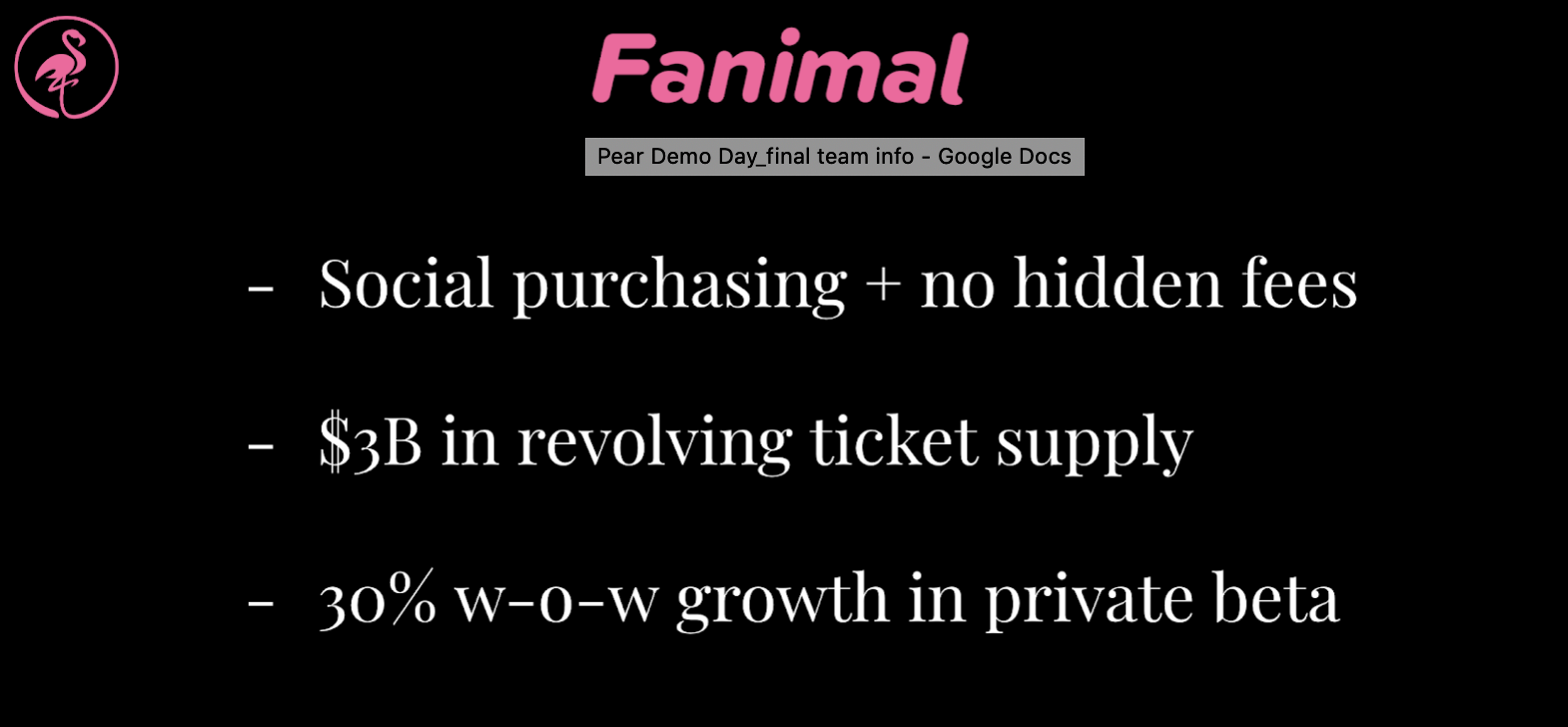
10) Xilis: A Stanford PhD and a PhD from UNC Chapel Hill (both now Duke University professors focused on oncology and precision health) came together for this company out of their acute awareness that when someone is diagnosed with cancer, finding the right treatment frequently takes months and often comes with countless side effects. To speed along the process, their company, Xilis, uses µ-organoids& to make thousands of 3D replicas of a patienttumor in about six days, which the company says can be used for testing for drug compatibility faster.
They say it works, too. At least, the co-founders, Xiling Shen and David Hsu, claim they&ve tested the technology with 12 patients, with a 100% success rate in predicting how a tumor will respond to medication.
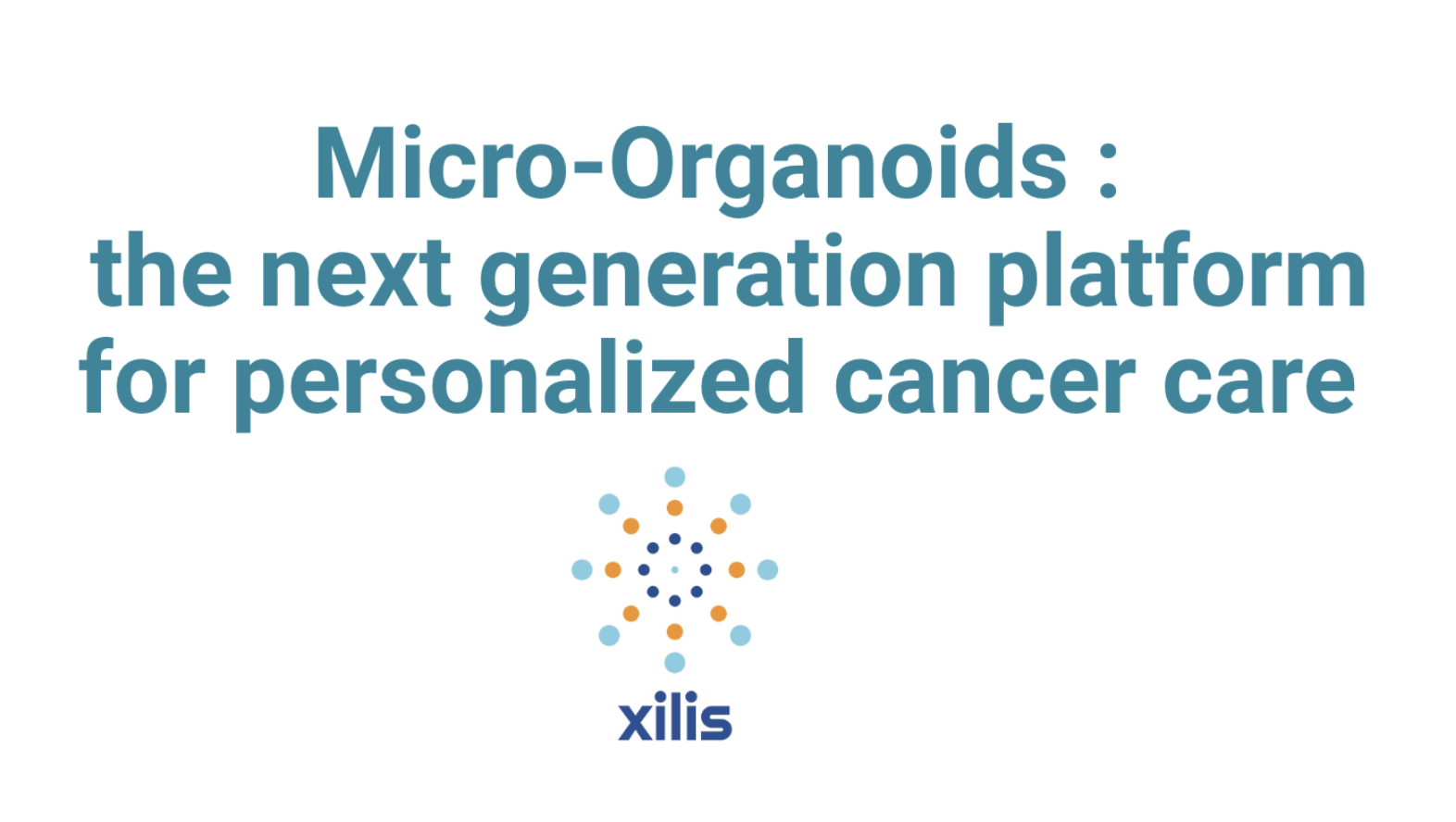
11) Equipped: Founded by two Stanford grads who&ve worked variously for the NBA, Tesla and Amazon, Equipped has an interesting proposal. What if instead of lugging an oversized umbrella to the beach or bringing a soccer ball to the park, you could nab these things where they make sense, in on-demand equipment lockers at the beach, or outside a park, where you could rent what you need, then return it?
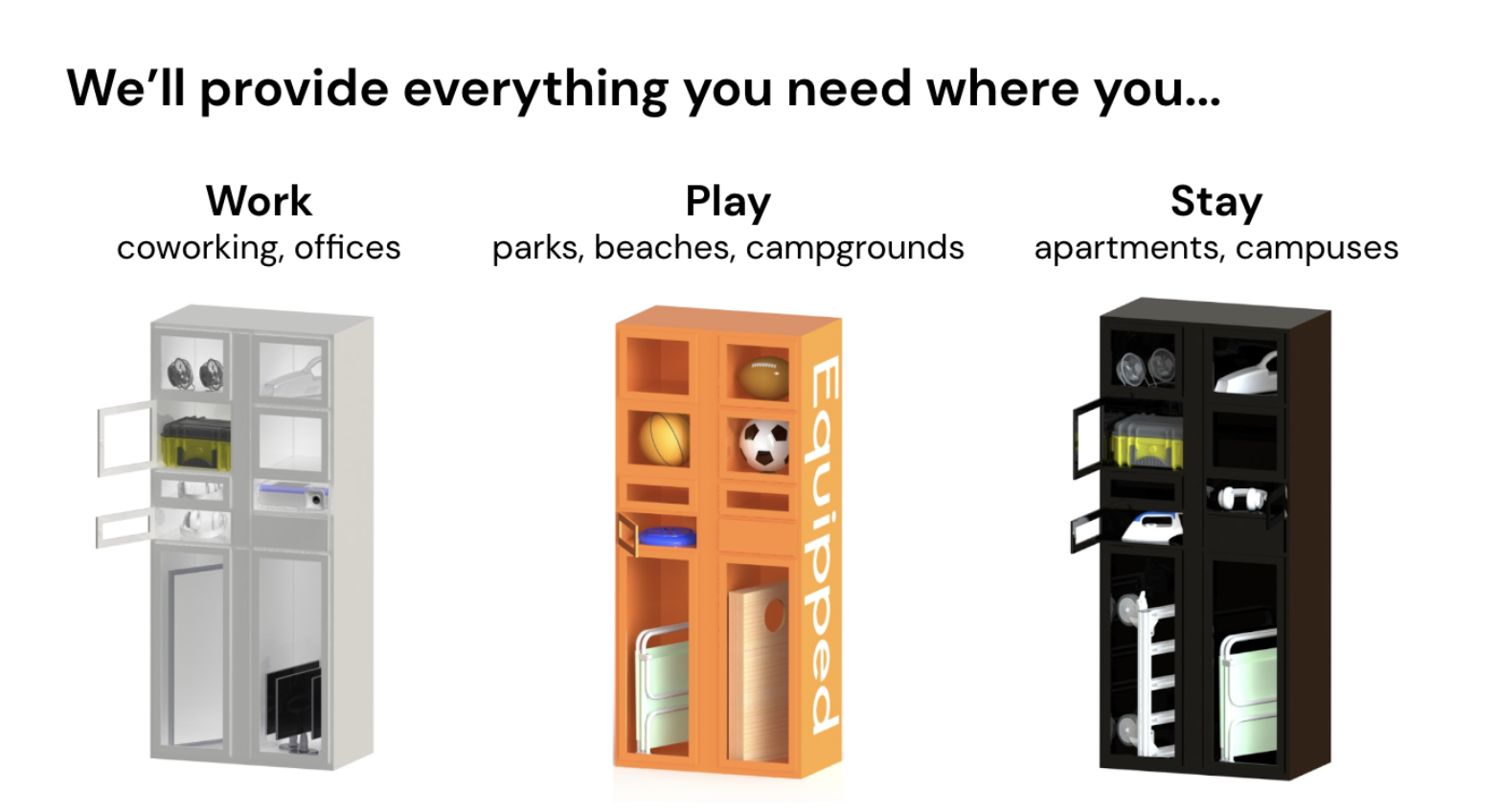
12) Maker: Two Stanford MBAs with marketing and management consultant experience have created a marketplace for small-batch wines.
Maker finds small/independent wineries, cans their product under the Maker label, then delivers to the end customer.

By the way, you can get a flavor for Peardemo day here if you&re curious.
- Details
- Category: Technology
This morning, Peloton (NASDAQ: PTON), the tech-enabled stationary bicycle and fitness content streaming company, raised $1.2 billion in its NASDAQ initial public offering. Despite dropping more than 10% in its first day of trading — ultimately closing down 11% at $25.84 per share — the IPO was a bona fide success. Peloton, once denied (over and over again) by VC skeptics, now has hundreds of millions of dollars to take its business into a new era. One in which, the media, hardware, software, logistics and social company attempts to become a generation-defining company akin to Apple.
Founded in 2012 —six years after Soul Cycle opened its first cycling studio in New YorkUpper East Side and two years before a Soul Cycle founder, Ruth Zukerman, jumped ship to launch her own indoor cycling business, Flywheel Sports —a man by the name of John Foley made the ambitious, some might say foolish, decision to start a company that would sell these exercise bikes direct-to-consumer. That way, you could take a Soul Cycle class, in essence, in the comfort of your own home. Even better, technology would improve the experience.
As my colleague Josh Constine recently described it, these bikes come outfitted with a 22-inch Android screen, transforming an outdated exercising experience and bringing it into 2019: &It makes lazy people like me work out. Thatthe genius of the Peloton bicycle. All you have to do is Velcro on the shoes and you&re trapped. You&ve eliminated choice and you will exercise,& Constine writes.
Pelotonability to get people exercise — a feature driven by its talented instructors (some of whom were poached from competitor Flywheel Sports) — ultimately had venture capital investors funneling $1 billion, roughly, into the business. Today, Peloton operates dozens of showrooms across the U.S., counts 1.4 million total community members — defined as any individual who has a Peloton account — and over 500,000 paying subscribers. Why? Because the company, as stated in its IPO prospectus, &sells happiness.&
&Peloton is so much more than a Bike — we believe we have the opportunity to create one of the most innovative global technology platforms of our time,& writes Foley. &It is an opportunity to create one of the most important and influential interactive media companies in the world; a media company that changes lives, inspires greatness, and unites people.&

Pelotonflagship product, a tech-enabled stationary bike.
Pelotoncommunity coupled with the high margins on sales of its $2,245 bikes had the company reporting $915 million in total revenue for the year ending June 30, 2019, an increase of 110% from $435 million in fiscal 2018 and $218.6 million in 2017. Its losses, meanwhile, hit $245.7 million in 2019, up significantly from a reported net loss of $47.9 million last year.
Whatnext for Peloton? The opportunities are endless, given the companyfirm seat at the intersection of hardware, software, media content and more. A third product may be in the works, expansion to international markets or new instructors. Peloton is going after a massive market ripe for disruption. Whatcertain is that we&ll see a whole lot of cash flowing into fitness tech copycats in the next couple of years.
Peloton, following a number of lukewarm consumer IPOs (Uber), nearly doubled its valuation to $8.1 billion this morning after pricing its IPO at the top of its range, $29 per share. To answer some of our most burning questions, we chatted with Pelotonpresident William Lynch, the former CEO of Barnes - Noble, about the float.
The following conversation has been edited for length and clarity.

Peloton president and former Barnes - Noble CEO William Lynch.
Kate Clark: Whatnext for Peloton?William Lynch: We now have over a billion in capital to fuel more growth, especially in the area of product innovation.
- Details
- Category: Technology
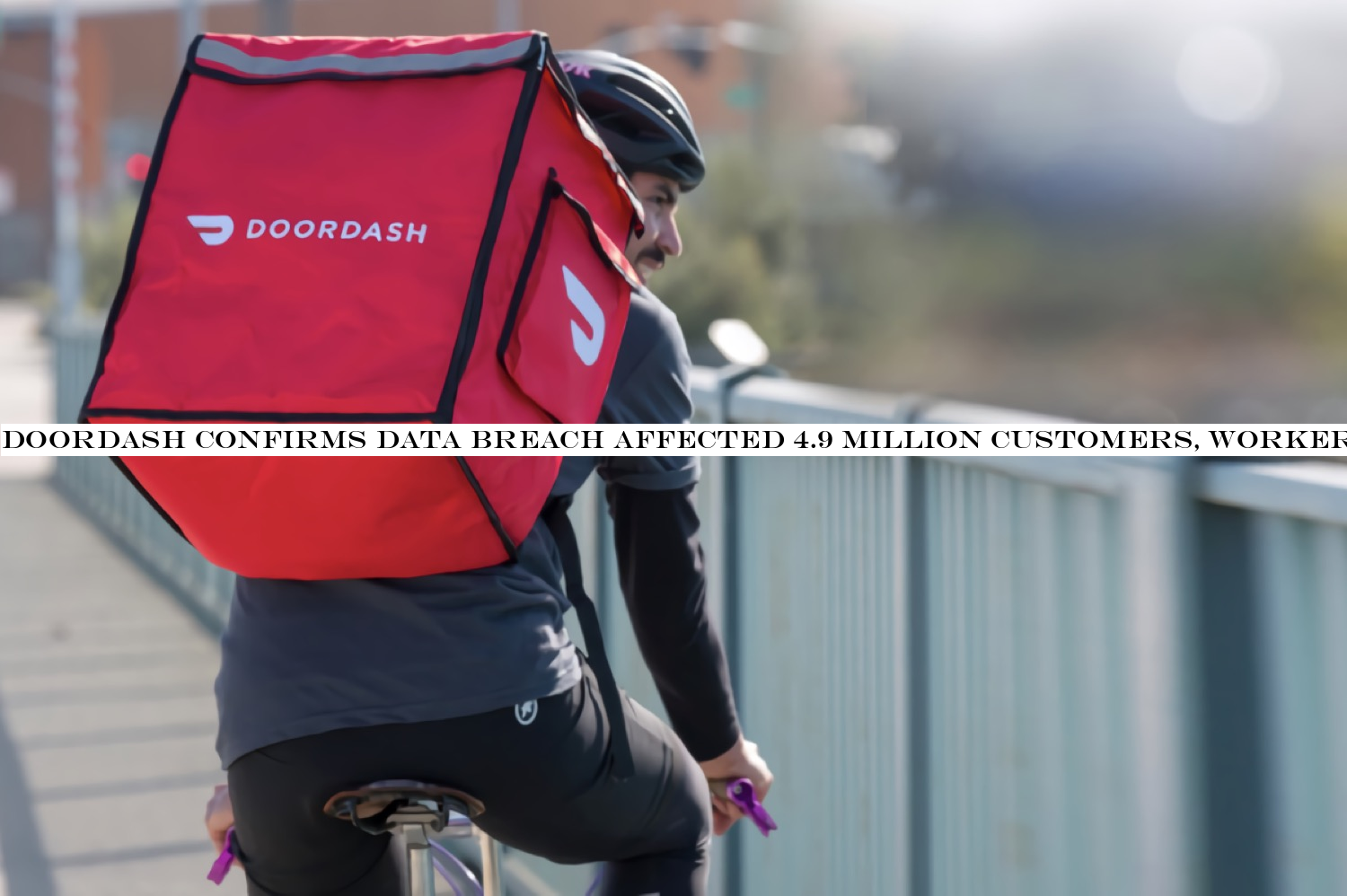
DoorDash has confirmed a data breach.
The food delivery company said in a blog post Thursday that 4.9 million customers, delivery workers and merchants had their information stolen by hackers.
The breach happened on May 4, the company said, but added that customers who joined after April 5, 2018 are not affected by the breach.
Itnot clear why it took almost five months for DoorDash to detect the breach.
DoorDash spokesperson Mattie Magdovitz blamed the breach on &a third-party service provider,& but the third-party was not named. &We immediately launched an investigation and outside security experts were engaged to assess what occurred,& she said.
Users who joined the platform before April 5, 2018 had their name, email and delivery addresses, order history, phone numbers and hashed and salted passwords stolen.
The company also said consumers had the last four digits of their payment cards taken, though full numbers and card verification values (CVV) were not taken. Both delivery workers and merchants had the last four digits of their bank account numbers stolen.
Around 100,000 delivery workers also had their driverlicense information stolen in the breach.
The news comes almost exactly a year after DoorDash customers complained that their accounts had been hacked. The company at the time denied a data breach and claimed attackers were running credential stuffing attacks, in which hackers take lists of stolen usernames and passwords and try them on other sites that use the same passwords. But many of the customers we spoke to said their passwords were unique to DoorDash, ruling out such an attack.
When asked at the time, DoorDash could not explain how the affected accounts were breached.
Updated with comments from the spokesperson.
- Details
- Category: Technology
Read more: DoorDash confirms data breach affected 4.9 million customers, workers and merchants
Write comment (92 Comments)Page 779 of 5614

 14
14





